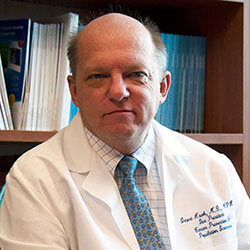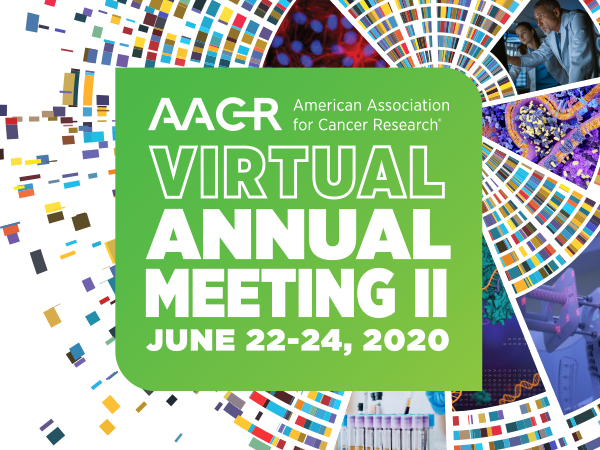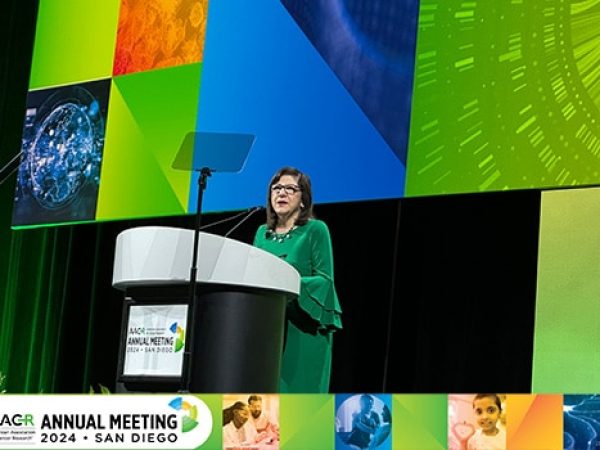How Can Identifying and Measuring Exposures to Environmental Carcinogens Help Prevent Cancer?
A recent estimate suggests that more than 40 percent of cancers could be prevented. Modifiable factors linked to cancer include tobacco use, obesity, alcohol consumption, and exposure to environmental carcinogens, which are substances in our surroundings that can cause cancer and may facilitate progression of the disease.
Environmental carcinogens could be present in our air, water, or food. While some of these carcinogens have been identified, scientists believe that current measures to mitigate our exposures are inadequate. Other carcinogens present in our environment have yet to be fully defined.
To address these issues, the AACR is hosting a conference focusing on Environmental Carcinogenesis: Potential Pathway to Cancer Prevention next week in Charlotte, North Carolina. This meeting will review current advances in the field with the goal of sparking ideas and discussion about novel ways to prevent cancer.
We had the opportunity to speak with the conference cochairs – AACR Past President Margaret Kripke, PhD, FAACR and Ernest Hawk, MD, MPH, both from The University of Texas MD Anderson Cancer Center, and Timothy Rebbeck, PhD, from the Dana Farber Cancer Institute and the Harvard T.H. Chan School of Public Health – about what to expect at the upcoming meeting.
What prompted this conference about environmental carcinogenesis, and what is the broad scope of this meeting?
Kripke: Several years ago, I was a member of the President’s Cancer Panel, and we published a report highlighting ways to reduce cancers caused by environmental factors. For me, this was a profoundly eye-opening experience. It turned out that many of the assumptions that I had – such as rigorous testing and regulation of potentially carcinogenic substances prior to their public availability – were largely untrue. Since that time, I’ve been interested in trying to raise the visibility of this issue, because reduction of exposure to these carcinogens in the environment is a potential way to prevent many cancers.
Hawk: There’s been a lot of focus over the last two decades on individual behaviors – such as diet and lifestyle – as modifiable risk factors for cancer prevention. However, we know that the environment plays a very big role in interacting with our genome and can have an effect on cancer incidence and progression as well. During this meeting, we’ll talk about known toxins in the environment, how these toxins interact with the genome, the best way to measure exposure to such toxins, and methods to prevent and facilitate the early detection of cancers caused by environmental carcinogenesis. This will help us to identify some of the remaining questions in the field so that we can better learn how to intervene in the future.
Rebbeck: There’s a lot of misinformation – both in the public and in the scientific community – about true environmental carcinogens; the data are often inconsistent, and the messages delivered are not always accurate. This conference is very important, because it will help us to further delineate the carcinogens that are present in our environment and foster discussion about ways to mitigate our exposure to carcinogenic compounds.
Can you tell us about some of the highly rated abstracts that will be discussed at the meeting?
Kripke: There’s an entire plenary session devoted to this area which will highlight important topics in the field. The first talk focuses on nitrates in United States drinking water and how that contributes to the overall cancer burden. This is a major issue, and should be of great interest to the public, because the ingestion of nitrates is associated with increased risk for multiple types of cancer.
A second talk will discuss how fine particulate matter – or air pollution – can affect mortality among young individuals with cancer. While the incidence of some cancers, such as those related to tobacco use, has declined in recent decades, the incidence of childhood cancers has increased in the same timeframe. In addition to this talk, I believe that several poster presentations will focus on environmental agents that could be fueling this troublesome trend.
Can you talk about the plenary sessions focused on pathways to prevention and early detection?
Hawk: One of the key topics that will be discussed is the idea of “precision prevention,” the notion that we can combine an individual’s genome with an envisioned biomarker to measure their lifetime exposures to carcinogens, or better yet, measure the cumulative impact of those carcinogenic exposures on the genome to tailor preventive cancer measures. The final talk in this session, for example, will focus on characteristic landmark aberrations from UV exposure that can be detected in the genome. These “sentinels” could help us to determine how much UV damage an individual has accrued over their lifetime, which can be used to predict skin cancer risk.
Another interesting topic centers around the microbiome. One of the presentations will focus on recent advances in microbiome research and how the microbiome may influence responses to carcinogenic exposures.
Rebbeck: Public engagement is key to addressing prevention – there are a few issues that need attention. First, the public is often not adequately informed about how environmental exposures can affect cancer risk; we need better evidence-based education to convey to the lay public about what substances are actually toxic. Second, scientists need to find ways to better interact with communities that are affected by the issues under study. Often, scientists identify a problem and study it, but they may not understand the context of the issue if they’re not living in that community. We can do a better job if we understand the circumstances that surround the issue and determine how the problem can be addressed so that it has the most translational impact down the road.
Another important issue is that of cancer disparities, which can exist because some individuals are more likely to be exposed to carcinogens based on where they live or work. Cancer disparities are unacceptable in our society; we need to find ways to help those who are at increased risk due to these specific exposures. Furthermore, we need to apply the knowledge gained from the studies on disparities to help eliminate exposure-related cancers in the entire population.
What are some of the challenges and next steps in this field?
Kripke: I think that the real challenge in the field is this – how do we translate all of this knowledge that we’ve accumulated about known environmental carcinogens into something that’s useful for reducing the burden of cancer? To address this issue, we need to move outside the realm of cancer medicine and dive into the realm of public and economic policy. We need to identify what laws need to be changed or addressed in order to remove some of these harmful substances from the environment to ultimately prevent the burden of many cancers.
Hawk: One possible reason that cancer is largely an age-related disease is because cumulative exposure to carcinogens across our lifetimes can affect our cancer risk. I think that one of the biggest challenges in the field centers around identifying one or more biomarkers that reflect such exposures, or the cumulative damage they’ve wrought, over time in healthy individuals. These biomarkers could help us to determine which asymptomatic individuals have a higher risk of developing cancer(s), and my ears will be particularly attuned to progress in this area.
Rebbeck: A central challenge in the field is identifying the most accurate ways to measure environmental exposures, and translating that information into risk stratification. Another main challenge is intervention – once we’ve been exposed to these carcinogens, is there a way that we can intercede and prevent the development of cancer? I anticipate that these challenges, among others, will be major topics of discussion at the meeting.
Interested in learning more about this meeting? Hawk shared his thoughts about the conference in this video interview:






